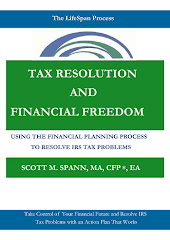Estimated tax payments are required on income that is not subject to withholding. The most common types of income that results in estimated tax are earnings from self-employment, interest, dividends, alimony, and rental income. Here are some basic tips related to estimated tax obligations.
Calculate your estimated tax payments
Many taxpayers have difficulty predicting what their actual income from self-employment and other sources (rental properties, investments, etc.) will be from year to year. Form 1040-ES is the form that is used to calculate required estimated tax payments. Use this form to calculate estimated taxes. Unless you anticipate significant changes in income, it is generally a good idea to make estimated tax payments based on 100% of the previous year’s tax liability. By choosing this option you will simply divide the total amount of tax you paid in 2008 by 4. There is an exception to this rule if your 2008 income was $150,000 or greater. Rather than being able to base estimated payments on 100% of last year’s total tax, higher income taxpayers are required to base payments upon 110% of last year’s total tax.
Review your income tax plan regularly
Staying current with estimated tax payments requires a plan. Review your actual income and tax payments on a regular basis if you are subject to estimated taxes. This is especially important if you anticipate significant fluctuations in your income. A little planning can avoid significant headaches and surprises when the next tax filing deadline arrives. In my professional experience I have seen many tax problems arise as a result of the lack of planning.
Avoid estimated tax penalties
A penalty may be applied if you do not pay enough estimated tax for the year. Estimated tax penalties may also apply if you do not make payments on time or in the correct amount. The Internal Revenue Service recently announced that interest rates for the calendar quarter beginning July 1, 2009, would remain the same. The rate for underpayment of taxes is currently 4 percent. The best way to avoid estimated tax penalties is to consistently track income and tax payments throughout the year. While this rate is currently rather low, any penalties that can be avoided will put more money in your pocket and eliminate unnecessary penalty payments to the IRS.
Plan ahead for events that may result in an estimated tax
Be prepared if you have an unexpected event occur (e.g., loss of job, divorce, early retirement, family emergency, major purchase) that requires a taxable distribution from a retirement plan or other investments that are subject to taxes. Taxpayers are frequently overwhelmed with dual focus on meeting cash flow needs and satisfying tax obligations. During uncertain economic times or when faced with a cash flow crisis, it can be very tempting to ignore basic tax obligations. Proper income tax planning can help prevent problems during both good times and bad financial times. Any potential tax event should be discussed with your tax advisor or financial planner.
Stay current with your payments
Estimated taxes are due by the 15th of April, June, September, and January. It is important to keep in mind that these are not exactly “quarterly payments”.
If needed, try making weekly, bi-weekly, or monthly payments. This will reduce the impact of the sticker shock related to quarterly payments throughout the year. A significant amount of discipline is required to make sure that funds set aside for estimated tax payments are actually available when needed. If you are routinely struggling to identify funds for estimated tax payments you should strongly consider establishing a separate bank account (e.g., checking, savings, money market) specifically for estimated taxes. Never commingle funds designated for taxes with monies that are being used to meet basic living expenses.
Use the Electronic Federal Tax Payment System
Paying taxes electronically can eliminate the need to write checks and streamline the process of paying estimated taxes. Using the EFTPS system is the easiest way to pay federal taxes for individuals as well as businesses. Taxpayers have the ability to make all federal tax payments including federal tax deposits, installment agreement and estimated tax payments using Electronic Federal Tax Payment System (EFTPS).
Wednesday, July 22, 2009
Tips to Stay Current with Estimated Tax Payments
Labels: tax resolution, financial plan, tax debt
Estimated tax,
income tax planning
Subscribe to:
Post Comments (Atom)





No comments:
Post a Comment